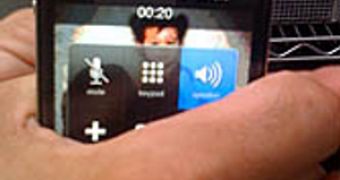According to Spencer Webb, the president of antenna design, integration, and consulting firm AntennaSys, claims Apple’s answer to the iPhone 4 reception issues holds water. In his tests, which involved “a two-handed Grip of Death,” Webb claims to have experienced no problems whatsoever with the iPhone 4’s reception.
Except, of course, for the number of bars displayed on screen, which Apple itself acknowledged as a bit of a flaw in the underlying iOS. However, aside from a problem that’s as good as fixed thanks to an upcoming firmware update confirmed by Apple, iPhone 4 does not fail to keep a call running even when running low on signal strength, the antenna expert says.
“I did not expect to be posting this before my personal iPhone 4 arrived, but my friend Keith showed up with his shiny-new iPhone 4,” Webb’s blog post begins. “We did a quick test in my office; this is not an exhaustive test, but it's a start,” he wrote.
“While on a live call, we held the phone from the top, and observed five bars,” Spencer continued. “Then, I asked Keith to give the phone a two-handed Grip of Death. After a delay of perhaps fifteen seconds, the signal strength fell to one bar. Regardless of how we applied the Grip of Death, we could not cause the call to drop. I realize this says more about my local signal strength than it does about the phone,” the post reads.
In what is already a much more conclusive test compared to the two YouTube videos spurring the original iPhone 4 antenna reports, Webb and his friend decided to employ electrical tape to try and bridge the phone’s two antennas as well as possible. The test was then repeated with “no discernable [sic] difference when we used tape,” Webb reports.
The duo finally tested out an original iPhone model (iPhone 2G) using the same methods, for comparison. The results were similar, again. Spencer, thus, concludes:
"1) The iPhone 4 is not nearly as hypersensitive to "hand" effects as I was being led to believe from the media buzz.
2) The iPhone 4 seems to be as sensitive to hand effects as the Primordial iPhone.
3) Electrical tape over the "band" did nothing."

 14 DAY TRIAL //
14 DAY TRIAL //